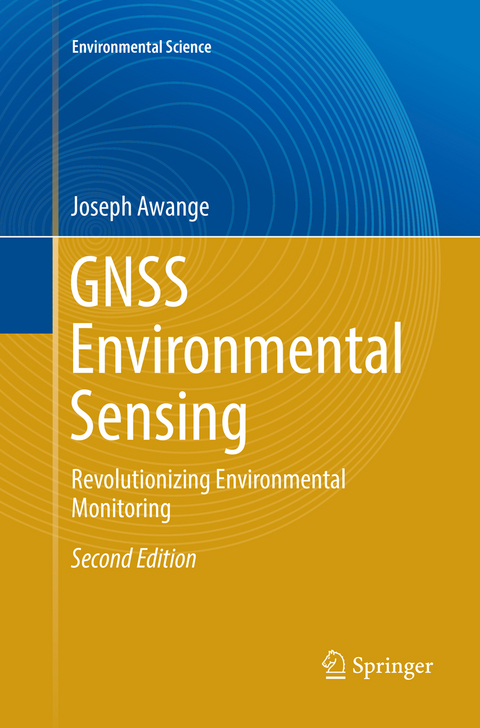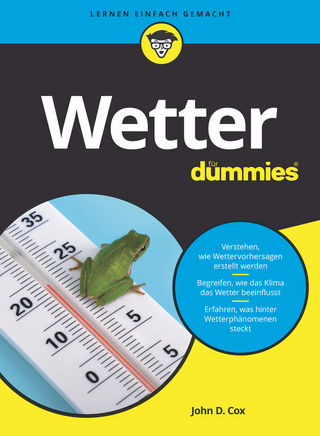
GNSS Environmental Sensing
Springer International Publishing (Verlag)
978-3-319-86402-0 (ISBN)
Since the publication of the first edition, much has changed in both the development and applications of GNSS, a satellite microwave remote sensing technique. It is the first tool to span all four dimensions of relevance to humans (position, navigation, timing and the environment), and it has widely been used for positioning (both by military and civilians), navigation and timing. Its increasing use is leading to a new era of remote sensing that is now revolutionizing the art of monitoring our environment in ways never imagined before.
On the one hand, nearly all GNSS satellites (Global Positioning System (GPS), Global Navigation Satellite System (GLONASS), Galileo and Beidou) have become operational, thereby providing high-precision, continuous, all-weather and near real- time remote sensing multi-signals beneficial to environmental monitoring. On the other hand, the emerging challenges of precisely monitoring climate change and the demand for the production of sufficient food for ever-increasing populations are pushing traditional monitoring methods to their limits.
In this regard, refracted GNSS signals (i.e., occulted GNSS signals or GNSS meteorology) are now emerging as sensors of climate variability, while the reflected signals (GNSS reflectometry or GNSS-R) are increasingly finding applications in determining, e.g., soil moisture content, ice and snow thickness, ocean heights, and wind speed and direction, among others. Furthermore, the increasing recognition and application of GNSS-supported unmanned aircraft vehicles (UAV)/drones in agriculture (e.g., through the determination of water holding capacity of soil) highlights the new challenges facing GNSS.
As such, this new edition three new chapters address GNSS reflectometry and applications; GNSS sensing of climate variability; and the applications in UAV/drones. Moreover, it explores the application of GNSS to support integrated coastal zone management.
Professor Joseph Awange joined the Department of Spatial Sciences (Curtin University, Australia) in 2006 under a Curtin Research Fellowship and concurrently undertook the prestigious Alexander von Humboldt (AvH) Fellowship at the Geodetic Institute (Karlsruhe Institute of Technology, Germany) having been awarded the Australian 2008-2011 Ludwig Leichhardt Memorial Fellowship for experienced researchers. In 2015, he won all the three major Fellowship Awards: Alexander von Humboldt (Germany), Japan Society of Promotion of Science (Japan) and Brazil Frontier of Science (Brazil) to carry out research in those countries. At Curtin University, he is currently engaged in teaching and research having attracted more than $1.5M worth of research grants. He obtained his BSc and MSc degrees in Surveying from the University of Nairobi (Kenya), and was also awarded a merit scholarship by the German Academic Exchange Program (DAAD), which facilitated his obtaining a second MSc degree and PhD in Geodesy at Stuttgart University (Germany). In 2002-2004, he was awarded the prestigious Japan Society for Promotion of Science (JSPS) Fellowship to pursue postdoctoral research at Kyoto University (Japan). Prof Awange attained International Editorial role in Springer Earth Science Books and has authored 11 scholarly books with the prestigious Springer publishers and more than 130 peer-reviewed high impact journal publications (in e,g., Remote Sensing of Environment, Journal of Climate, Climatic Change, Advances in Water Resources, International Journal of Climatology, and Journal of Hydrology among others).
Environmental monitoring.- Modernization of GNSS.- The Global Positioning System.-Mathematical modelling.- Environmental surveying and surveillance.- Data processing and adjustment.- Basics of Galileo satellites.- GNSS maps in environmental monitoring.- GNSS remote sensing of the environment.- GNSS Re ectometry and Applications.- Climate change and weather related impacts.- GNSS Sensing of Climate Variability.- GNSS Sensing of the Tropopause.- Water resources.- Coastal resources.- Land management.- Disaster management.- Environmental pollution.-Animals and vegetation protection and conservation.- Environmental impact assessment.- Applications to Unmanned Aircraft Vehicles/Drones (UAV).
| Erscheint lt. Verlag | 10.8.2018 |
|---|---|
| Reihe/Serie | Environmental Science | Environmental Science and Engineering |
| Zusatzinfo | XXII, 452 p. 190 illus., 180 illus. in color. |
| Verlagsort | Cham |
| Sprache | englisch |
| Maße | 155 x 235 mm |
| Gewicht | 724 g |
| Themenwelt | Sachbuch/Ratgeber ► Natur / Technik ► Natur / Ökologie |
| Naturwissenschaften ► Biologie ► Ökologie / Naturschutz | |
| Naturwissenschaften ► Geowissenschaften | |
| Technik ► Umwelttechnik / Biotechnologie | |
| Schlagworte | climate change monitoring • drones • Global Navigation Satellite Systems • global warming • GNSS Reflectometry • remote sensing of the environment • Sensing of Climate Variability • Water Quality and Water Pollution |
| ISBN-10 | 3-319-86402-5 / 3319864025 |
| ISBN-13 | 978-3-319-86402-0 / 9783319864020 |
| Zustand | Neuware |
| Haben Sie eine Frage zum Produkt? |
aus dem Bereich


